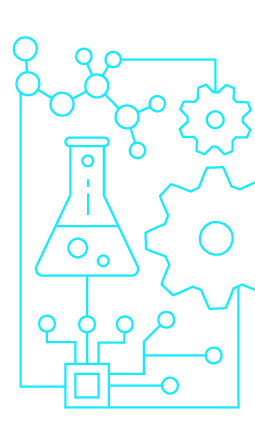|
|
|
| Module code: MAB-5.11 |
|
4V (4 hours per week) |
|
5 |
| Semester: 5 |
| Mandatory course: yes |
Language of instruction:
German |
Assessment:
Written exam, presentations, assessed laboratory reports
[updated 12.09.2004]
|
MAB-5.11 Mechanical and Process Engineering, Bachelor, ASPO 01.10.2004
, semester 5, mandatory course
|
60 class hours (= 45 clock hours) over a 15-week period.
The total student study time is 150 hours (equivalent to 5 ECTS credits).
There are therefore 105 hours available for class preparation and follow-up work and exam preparation.
|
Recommended prerequisites (modules):
None.
|
Recommended as prerequisite for:
|
Module coordinator:
Prof. Dr. Timo Gehring |
Lecturer: Prof. Dr. Timo Gehring
[updated 18.06.2004]
|
Learning outcomes:
After completing this course, students will:
- be acquainted with and be able to explain the basic microbiological ecology of biogeochemical cycles;
- have been introduced to and be able to explain how biological wastewater purification and treatment plants function and the role played by microorganisms in these processes;
- be able to design and dimension the main components of wastewater purification and treatment plants;
- have learnt practical skills associated with the handling of microorganisms;
- have gained practical experience in handling analytical equipment and in the use of analytical laboratory techniques in water and wastewater engineering;
[updated 12.09.2004]
|
Module content:
Introduction to microbial ecology; significance of microorganisms in the ecosystem; fundamental principles of limnology and soil ecology; stratification of lakes; self-purification capacity of inland waters.
Chemolithoautotrophy; nitrification; sulphur bacteria; anoxic and oxygenic photosynthesis; anaerobic respiration; denitrification.
Structure and dimensioning of biological wastewater treatment plants; BOD5, COD, TOC, AOH, SVI; nitrification; denitrification; phosphate removal; sludge treatment; exhaust air decontamination; flue gas scrubbing; flocculation and sedimentation; water treatment; drinking water production; anaerobic decomposition chain; sulphate reducers; methane bacteria; anaerobic sludge digestion; sludge disposal routes; biogas systems; anaerobic wastewater purification; composting; soil remediation.
Student lab experiments (supervised in small groups).
Laboratory safety and lab skills;
Standard lab techniques: gravimetry; titrimetry; potentiometry; chromatography; amperometry, photometry; enzyme tests. Sterile techniques: production of culture media; buffer systems; pouring agar plates; streaking; enrichment culture; pure culture.
Microbiological tests and methods: Agar diffusion test; disk inhibition assay; total viable bacterial count; sterile filter techniques; microscopy; stock culture management.
Environmental engineering: dry-weight determination; COD; flocculation-sedimentation in waste water treatment.
Reactor technology: continuous culturing of pure stock; biomass separation; stirred tank reactor; airlift reactor
[updated 12.09.2004]
|
Teaching methods/Media:
Copies of transparencies/slides used in the lectures, catalogue of questions
[updated 12.09.2004]
|
Recommended or required reading:
Ottow et.al.: Umweltbiotechnologie; G. Fischer
Fleischhauer et. al.: Angewandte Umwelttechnik
Vogel; Brock et al.: Biolology of Microorganisms, Prentice Hall
[updated 12.09.2004]
|


